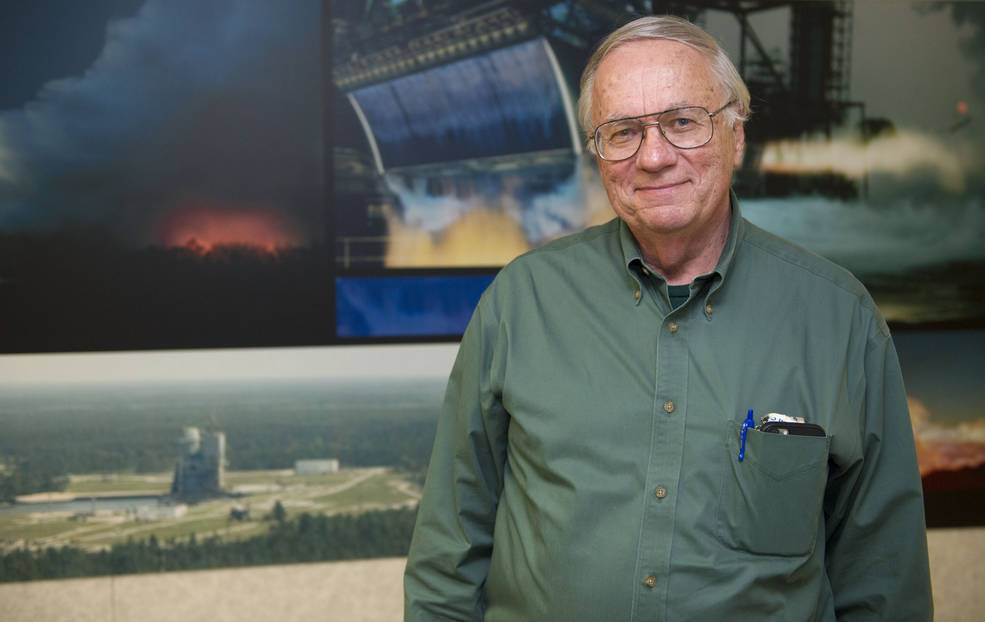Larry Pigott’s voice changes as he reflects on his NASA career, his words and tone communicating pride, not surprising considering his career has spanned more than 59 years in the aerospace engineering field, including 42 years as a NASA engineer.
“I would not trade this experience for anything,” Pigott said. “I am proud of NASA. I am proud of the people I have worked with over the years.”
April marks the official retirement month for the Bogalusa, Louisiana native. No matter how much time has passed, a few things have remained constant throughout Pigott’s career – the love for the people he worked with, the teamwork environment associated with the job, and always completing the work in a safe manner.
Pigott’s career with NASA began in 1981, when he spent 11 years at Michoud Assembly Facility in New Orleans. In December 1992, Pigott relocated to NASA’s Stennis Space Center, near Bay St. Louis, Mississippi, as a Marshall Space Flight Center technical representative for space shuttle main engines. Pigott was part of a team that monitored activities associated with an engine testing campaign that, at times included hot fires 24 hours a day for seven days a week.
“I learned working at NASA that to have a good relationship with my fellow workers, it required we trust one another,” Pigott said. “Trust is the backbone that holds the team together.”
Pigott now splits time living in Pearl River, Louisiana, and Tallahassee, Florida. He describes his most recent work within the Rocket Propulsion Test Program Office at NASA Stennis as insight and oversight that included working with contractors for supporting maintenance and research and development programs.
Pigott’s work was a part of something bigger than himself, and the relationships formed along the way were something he valued. “What makes NASA so special is the fact that they take care of their people,” he said. “That’s a highlight. That has been proven by a lot of surveys that have taken place that NASA is the best place to work.”
An annual national government-wide survey has ranked NASA as the Best Place to Work in the Federal Government, among large agencies, for 11 consecutive years. Pigott said the environment at NASA is different, and the work culture is something that does not happen by accident.
“You have people who enjoy working, especially working together,” he said. “They have developed that environment, and they get recognized for the work that is done. Each generation has its way of how they want to run things. As long as you focus on safety, it’s going to continue to grow in favorable ways.”
While much of Pigott’s recent work did not directly involve NASA’s Artemis program, he said it is an exciting time in which he sees great opportunities ahead for young engineers as the agency returns humans, including the first woman and the first person of color, to the Moon to explore the lunar surface and prepare for flights to Mars.
“I enjoyed every minute of it,” Pigott said about working at NASA. “I love Stennis, and I love the people who work there and look forward to their continuing careers.”
For information about Stennis Space Center, visit:



























